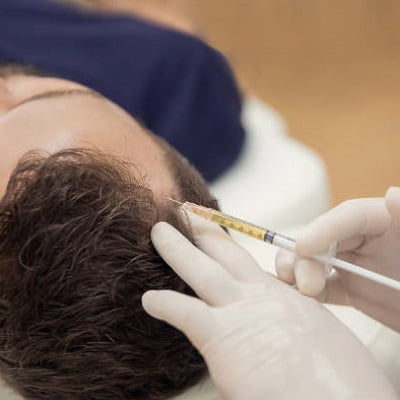
Hair loss is a common concern that affects millions of people worldwide. Many people desire a full head of hair, whether due to genetics, aging, or other factors. In recent years, various treatments and solutions have emerged to combat baldness, and one such option is hair filler in Islamabad. But does hair filler for baldness work?
In this comprehensive blog post, we’ll delve into the world of hair filler treatments, explore their efficacy, and help you decide if you’re considering this option.
Hair Filler for Baldness:
Hair filler, also known as hair filler injections or dermal fillers for hair loss, is a non-surgical cosmetic procedure designed to stimulate hair growth and improve the appearance of thinning or balding areas.
Unlike traditional hair transplant surgeries, which involve surgically moving hair follicles from one part of the body to another, hair fillers use various substances to enhance the existing hair or encourage new hair growth.
The most common substances used in hair filler treatments include hyaluronic acid and platelet-rich plasma (PRP). These substances are injected directly into the scalp to increase blood flow, stimulating hair follicles and promoting the growth of thicker, healthier hair.
The Efficacy of Hair Filler Treatments:
Now that we have a basic understanding of hair filler treatments let’s explore their efficacy in more detail.
Hyaluronic Acid Fillers:
- Hyaluronic acid is a naturally occurring substance in the body that plays a crucial role in maintaining skin and tissue health.
- These fillers can improve the appearance of thinning hair by adding volume and hydration to the scalp.
- While hyaluronic acid fillers can create the illusion of thicker hair, the results are typically temporary and may last several months.
- They are better suited for individuals with mild to moderate hair thinning.
Platelet-Rich Plasma (PRP):
- PRP therapy involves drawing a small amount of the patient’s blood, processing it to isolate platelets, and injecting the concentrated PRP into the scalp.
- PRP is believed to contain growth factors that can stimulate hair follicles and encourage hair regrowth.
- Several studies have shown promising results with PRP therapy, though the outcomes can vary from person to person.
- Multiple PRP sessions are often required for optimal results, and maintenance sessions may be necessary.
Factors Influencing Efficacy:
The efficacy of hair filler treatments can be influenced by several factors, including:
- Severity of Hair Loss: The effectiveness of hair fillers often depends on the extent of hair loss. Individuals with advanced baldness may not experience the same results as those with mild to moderate thinning.
- Treatment Technique: The skill and experience of the practitioner performing the procedure can significantly impact the results. Choosing a qualified and experienced provider for hair filler treatments is crucial.
- Patient’s Unique Physiology: Each person’s body responds differently to treatments. Genetics, age, and overall health can affect how well hair filler treatments work.
- Combination Therapies: Some individuals opt for combination therapies, such as using hair fillers with other hair loss treatments like minoxidil or finasteride. Combining treatments may yield better results.
- Maintenance: Depending on the type of filler used, maintenance sessions may be required to sustain the results. Regular follow-up appointments are essential to ensure the longevity of the treatment.
Realistic Expectations:
It’s essential for individuals considering hair filler treatments to have realistic expectations. While these procedures can improve the appearance of thinning hair, they may provide different results than a complete hair transplant surgery. Hair fillers are generally best suited for individuals who:
- Have mild to moderate hair thinning or baldness.
- Are looking for a non-surgical and less invasive solution.
- Are willing to undergo multiple sessions for maintenance.
- Understand that results may vary; no treatment can guarantee 100% hair restoration.
Alternative Hair Restoration Options:
While hair fillers have gained popularity, they are not the only option for addressing hair loss. Here are some alternative treatments to consider:
- Hair Transplant Surgery: Surgical hair transplants, such as follicular unit transplantation (FUT) and follicular unit extraction (FUE), involve transplanting hair follicles from one body area to the scalp. It provides a permanent solution to hair loss but requires surgery.
- Low-Level Laser Therapy (LLLT): LLLT devices, such as laser caps and combs, use low-level laser light to stimulate hair follicles and promote hair growth. These devices are non-invasive and can be used at home.
- Wigs and Hairpieces: For individuals who want an immediate solution to hair loss, wigs and hairpieces can provide a natural-looking appearance.
The Bottom Line!
Hair filler treatments can be viable for individuals with mild to moderate hair thinning looking for a non-surgical solution. However, the efficacy of these treatments varies from person to person, and results may be temporary. It’s crucial to consult with a qualified healthcare provider or dermatologist at SKN Cosmetic Clinic Islamabad to determine the best approach for your specific hair loss concerns.



